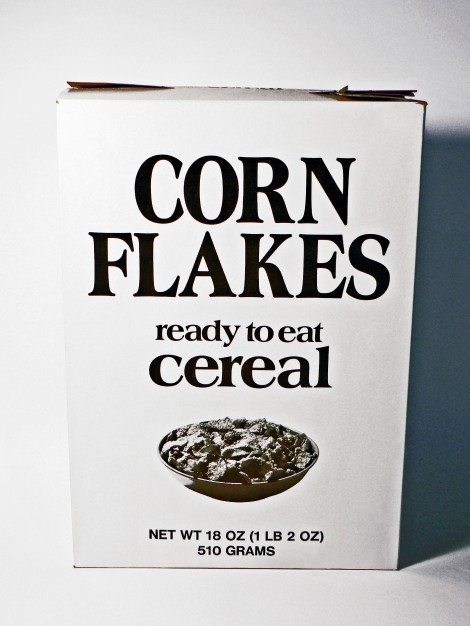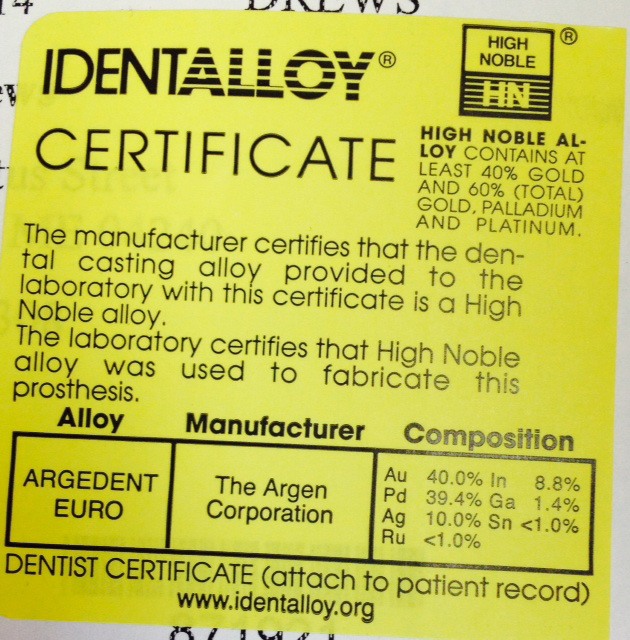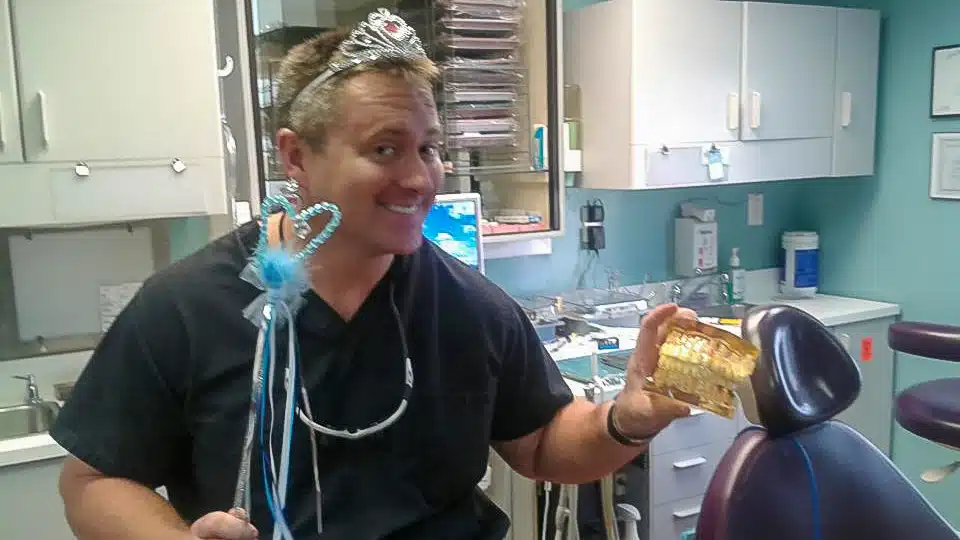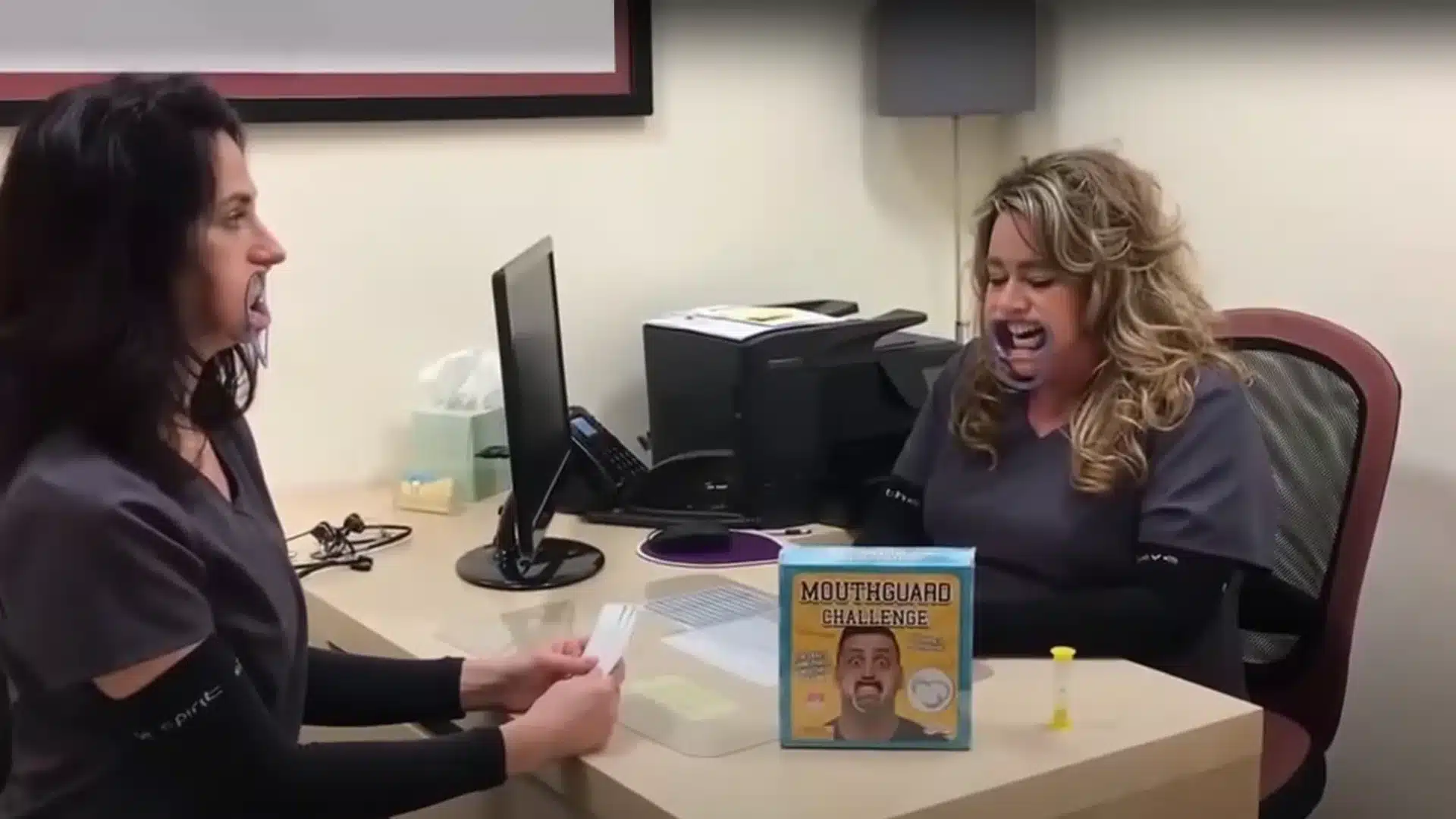Not All Crowns Are Created Equal
If you are like me, you appreciate a good crown. Pun intended. I sometimes don a crown in the office to imitate the tooth fairy and put a pediatric patient at ease.

And, if you’re like me, you’ve probably purchased one of those ultra-generic boxes of corn flakes during a moment of thrifty insanity. It doesn’t even have a rooster or a sunshine on the box. The box isn’t even white, it’s a dirty shade of gray. Even worse, the contents look and feel a lot like the box itself. I try and fool myself into thinking that the low cost makes up for the lack of taste, but by the time I finish the box of cereal I come to my senses and tell my wife she is just better off doing all of the grocery shopping.
The global economy is changing and this means that labor and materials can be very cheap overseas, which is obviously attractive to clinicians who see their profit margins shrinking (especially while contending with a lower fee reimbursement rate by HMOs). Therefore, one way to lower overhead can be by skimming on supplies and lab fees.
Born In The U.S.A. (go on, sing it with me!)
With all of the recent attention on Monsanto, it seems the public is starting to question where their food comes from. However, most dental patients are not demanding to be informed where their restorations are being made. Is there an assumption that Bruce Springsteen is in a lab, somewhere in Iowa, hand chiseling crowns while riding a Harley-Davidson into the sunset? Do people think that all labs are just down the street from their dentist’s office?
Let me assure you that Bruce Springsteen isn’t lovingly fabricating your dental appliance, and many offices aren’t using labs down the street, in neighboring states, or even in the U.S. The reality, and it really should come as no surprise, is that China is one of the biggest exporters of dental prosthetics. However, China does not have an F.D.A. with the same quality control standards as the U.S. to regulate what they produce. If a lab uses contaminated or poisonous materials, liability becomes a major issue. What’s more, you should know that it is almost impossible to hold a foreign lab, that is thousands of miles away, accountable for a problem once we have placed the restoration in an American mouth.
Do you remember those “everything smells” stickers? Did you have just the fruity ones? Or did you collect the stinky stickers, too? I had them all. Unlike those cool scratch-n-sniff sticker collections many of us had as children, the stickers we collect as grown ups aren’t nearly as much fun.

☜ This is the kind of sticker you collect as an adult.
If you have a crown (the dental kind, not the princess kind) that bright yellow sticker is the kind you want to add to your collection.
It certifies exactly what percentage of what materials are in your restoration. Think of it like AKC (American Kennel Club) papers for your mouth.
And so commences . . .
The Chemistry Lesson
A crown can be made of many different materials including gold (although they are always mixed with other metals to give added strength), all porcelain, porcelain fused to a metal substructure (PFM), which is essentially a gold crown underneath a porcelain crown, and porcelain fused to zirconia or full zirconia.
Gold
Gold is one of the least expensive materials, and also the least likely to cause allergic reactions. However, not everyone wants a gold tooth (at least not in the front). The best gold restorations are a high noble alloy (using pure gold would be way too soft to be functional for chewing), which means that at least 60% of the crown is made up of gold and other precious metals like platinum, palladium and silver (all good anti-rust materials!). However, one of the problems with using metal is that it is a great conductor of temperature; remember how it’s no fun to open your car door after you’ve left it baking in the sun.
Porcelain
Porcelain looks great, doesn’t really conduct heat and generally does not cause any allergy sensitivity. But it’s more expensive and less durable. And certain cements can’t be used to bond them to teeth, and some of those cements can actually cause sensitivity.
PFMs
PFMs have historically been a good marriage between the strength/durability and cosmetic functions. Porcelain is stacked in layers on top of the high-noble gold alloy. It means using a better cement, although there can still be an issue with allergies.
Ultimately, the choice of material depends on several factors including price, durability, allergies, and cosmetics. It’s important you ask your dentist to explain why he’s choosing the material he’s choosing. And go ahead and ask about the lab that will be constructing your crown, too.
You Get What You Pay For
If you google the statistics on which countries and airlines have the most crashes, Russia and Nigeria are at the top of the list. Why? Older technology, less rigorous maintenance schedules, and a different standard of quality control. I know I’d rather pay a little bit more money to fly on a plane that is mechanically sound (it doesn’t even have to be a ‘brand name’ airline) because I trust that the checks and balances have been adhered to. My wife says she feels safer flying on British Airways because most of the pilots had their first careers, and training, through the Royal Air Force (although I think it might be more related to the free, on-board drinks).
In much the same way, I want assurances that the lab I work with not only uses the highest quality of materials, but trust that the technicians who are building my patient’s crowns and bridges are trained professionals, specialized in their area (whether it’s porcelain, metal and final stain, or glaze).
The lab that I use, Harmony Dental Lab, has Quality Control checks at each stage in the process of fabricating a crown; after metal, after porcelain, before stain and glaze, and then a final before it is sent out for delivery. If there is any question regarding the shade, impression, materials, or any issues after receiving the case, we have an assigned coordinator to communicate with.
There are obviously certain things that it’s o.k. to go cheaper on; gloves, little plastic water cups, those paper bibs we hook around your neck, toilet paper in the bathroom (o.k. maybe not that). But, when it comes to what I put in your mouth – whether it’s to get you numb, or to pack a hole with filling material – using a lower-end product means that you will be calling back in a few weeks for an appointment, because the ‘spackle’ came out or broke off. That just wastes everyone’s time; you have to take off work, and my schedule is filled with “re-do/no charge” procedures. Not to mention the possible health risks associated with using spackle in your mouth.

Ben Franklin may have said it best.
(there’s a reason his face is printed on money)
“The bitterness of poor quality is remembered long after the sweetness of low price has faded from memory.”
– Benjamin Franklin





